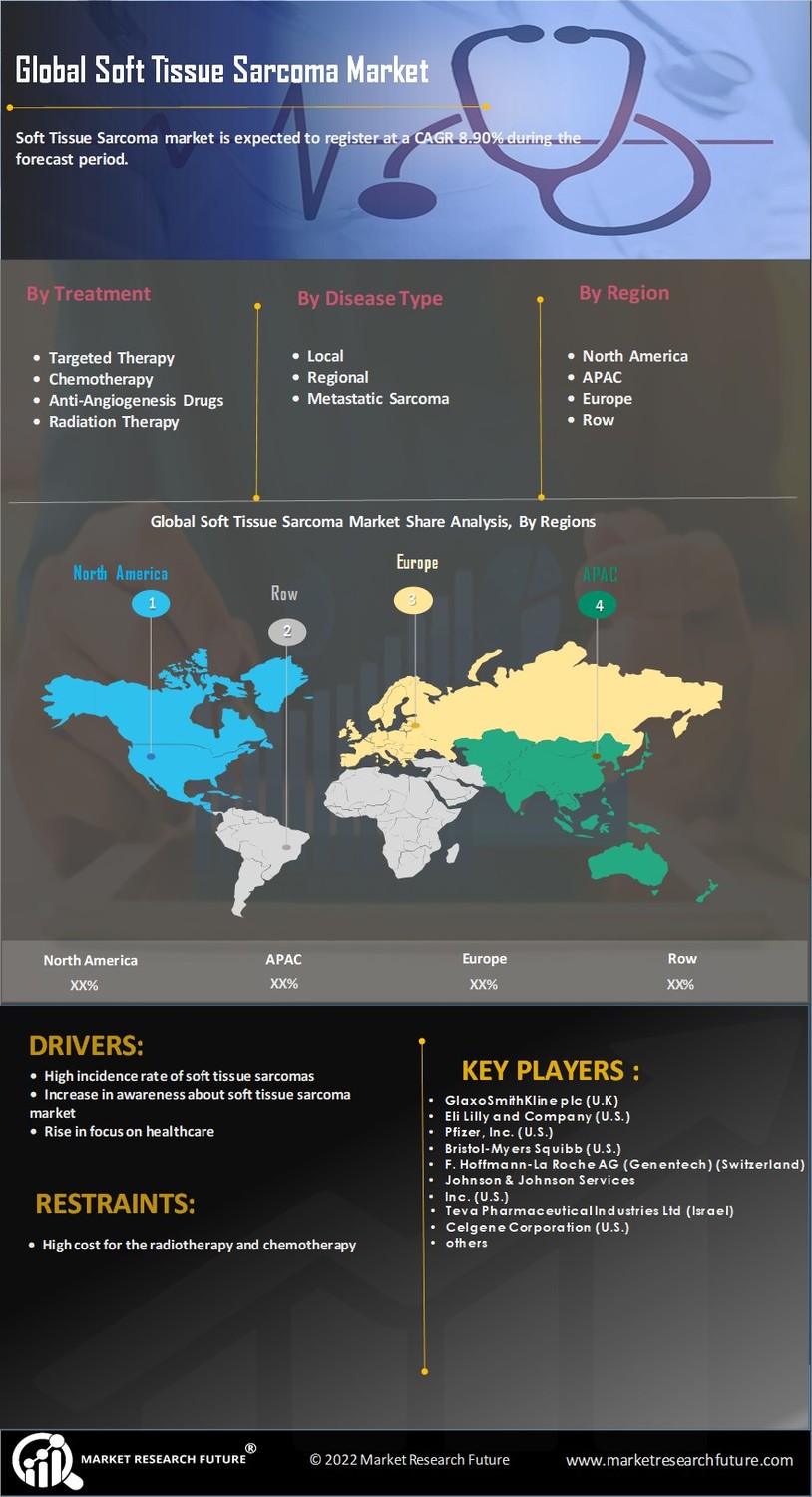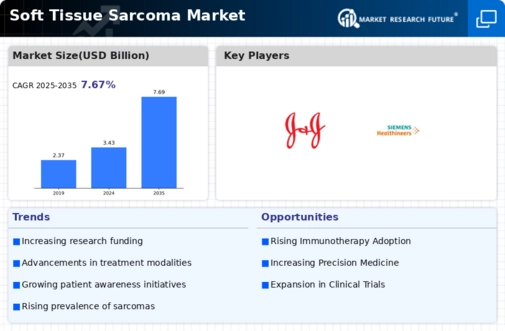Advancements in Diagnostic Techniques
Advancements in diagnostic techniques are significantly influencing the Soft Tissue Sarcoma Market. Enhanced imaging technologies, such as MRI and CT scans, have improved the accuracy of soft tissue sarcoma diagnoses. These innovations allow for earlier detection and better characterization of tumors, which is crucial for effective treatment planning. Furthermore, the integration of molecular diagnostics is enabling personalized treatment approaches, thereby increasing the likelihood of favorable outcomes. As diagnostic capabilities continue to evolve, the market is expected to expand, driven by the need for precise and timely interventions. The Soft Tissue Sarcoma Market stands to benefit from these advancements, as they facilitate improved patient management and treatment efficacy.
Emergence of Novel Therapeutic Agents
The emergence of novel therapeutic agents is poised to reshape the Soft Tissue Sarcoma Market. Recent developments in targeted therapies and immunotherapies have shown promise in treating various subtypes of soft tissue sarcomas. These innovative treatments are designed to specifically target cancer cells while minimizing damage to healthy tissues, potentially leading to improved patient outcomes. As clinical trials continue to demonstrate the efficacy of these agents, the market is likely to see an influx of new products. This influx may not only enhance treatment options for patients but also stimulate competition among pharmaceutical companies, further driving advancements in the Soft Tissue Sarcoma Market.
Increased Investment in Cancer Research
Increased investment in cancer research is a notable driver for the Soft Tissue Sarcoma Market. Governments and private organizations are allocating substantial funds towards understanding the biology of soft tissue sarcomas and developing novel therapeutic strategies. For instance, funding for clinical trials and research initiatives has seen a marked increase, with billions of dollars directed towards oncology research. This financial support is likely to accelerate the development of new drugs and treatment modalities, thereby enhancing the therapeutic landscape for soft tissue sarcoma patients. As a result, the Soft Tissue Sarcoma Market may witness a surge in innovative treatment options, catering to the evolving needs of patients and healthcare providers.
Rising Incidence of Soft Tissue Sarcoma
The increasing incidence of soft tissue sarcoma appears to be a primary driver for the Soft Tissue Sarcoma Market. Recent data indicates that the annual incidence rate of soft tissue sarcomas is approximately 4.3 cases per 100,000 individuals. This rise in cases may be attributed to various factors, including environmental influences and genetic predispositions. As awareness of this condition grows, healthcare systems are likely to allocate more resources towards research and treatment options. Consequently, this trend may lead to an expansion in the market, as more patients seek innovative therapies and management strategies. The Soft Tissue Sarcoma Market is thus positioned to experience growth as the demand for effective treatment solutions increases.
Growing Awareness and Education Initiatives
Growing awareness and education initiatives regarding soft tissue sarcoma are contributing to the expansion of the Soft Tissue Sarcoma Market. Campaigns aimed at educating both healthcare professionals and the public about the signs and symptoms of soft tissue sarcomas are becoming increasingly prevalent. This heightened awareness is likely to lead to earlier diagnosis and treatment, which can significantly improve patient outcomes. Additionally, as more individuals become informed about the disease, there may be an increase in advocacy for research funding and support services. Consequently, the Soft Tissue Sarcoma Market is expected to grow as awareness drives demand for effective treatment options and resources.


















Leave a Comment